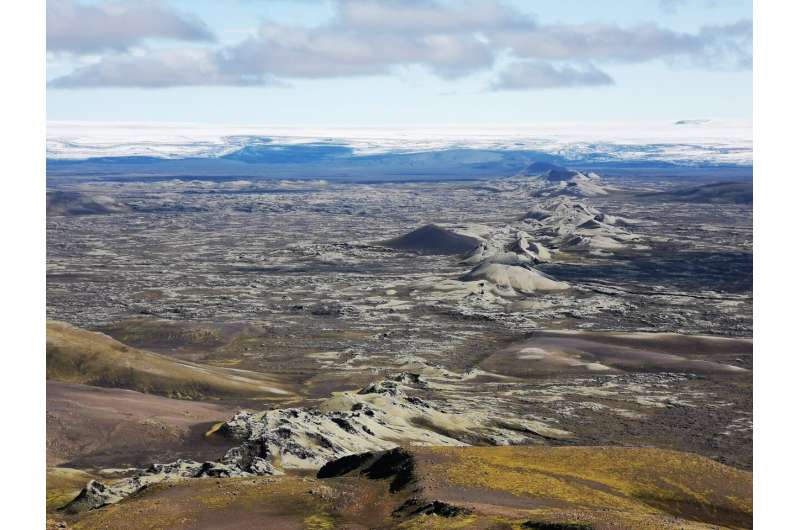New study of continental margins could provide better understanding on the way to a carbon-neutral economy

Pangaea was the name Alfred Wegener gave to the supercontinent that existed on Earth 250 million years ago. Over the course of many millions of years, this supercontinent broke into different pieces, which became the landmasses we see on the globe today. Extensional forces on the tectonic plates causes continents to break apart—as Pangaea once did—creating new ocean basins. Large parts of these extended continents are not visible because they lie under water and are named rifted margins.
Continental margins harbor vast accumulations of globally distributed sedimentary, igneous and ultramafic rocks, adjacent to large coastal populations due to their geographic location. Until a few decades ago, such continental margins were divided into magma-rich and magma-poor. This classification followed the formation history of new ocean floor—but does not seem to encompass the full range of ways rift margins form.
“These rifted margins are located on the coasts on both sides of the oceans and contain huge sediment accumulations, hydrocarbon reserves, and are a potential location of new resources needed for the new carbon-neutral economy,” explains researcher Marta Pérez-Gussinyé of the Center for Marine Environmental Sciences, University of Bremen (MARUM).
She and her team of researchers prove that other rift margin origin types have been identified in the meantime, which leads to a great variety of so-called continental margin architectures. They are based on different processes of magmatic, tectonic, sedimentary or hydrothermal nature. “The origin of rift margins is multifaceted, meaning that they have been formed in different ways. Unlike previous approaches, this overview gives us the opportunity to analyze rifted margins holistically,” first author Pérez-Gussinyé explains.
Her research group has pioneered the development of numerical tools to study rifted margins. These tools allow to combine data and models to understand the processes that shape margins. The authors have compiled the latest observations and theoretical results that should lead to a process-based understanding of margin formation. “This will be key to making accurate predictions in the future for the new storage and energy requirements needed to transition to a carbon-neutral economy,” Pérez-Gussinyé emphasizes.
Together with her co-authors, she concludes that rifted margins could play a central role in the transition to a green economy in the future: as potential carbon dioxide storage sites, as mineral deposits, or even as sources of geothermal energy and natural hydrogen. But before that, additional geophysical and geological data would need to be integrated into further research. “The paper shows how a combination of observation and numerical simulation of the processes that occur during continental rifting will help unlock this potential in the future.”
Some of the numerical models presented in the article are being developed and improved as part of the Cluster of Excellence “Ocean Floor” based at MARUM. They will help to better understand the formation of continental margins and oceanic crust and their role in the global carbon cycle.
The work is published in the journal Nature Reviews Earth & Environment.
More information:
Marta Pérez-Gussinyé et al, Towards a process-based understanding of rifted continental margins, Nature Reviews Earth & Environment (2023). DOI: 10.1038/s43017-022-00380-y
Provided by
MARUM – Center for Marine Environmental Sciences, University of Bremen
Citation:
New study of continental margins could provide better understanding on the way to a carbon-neutral economy (2023, February 14)
retrieved 14 February 2023
from https://phys.org/news/2023-02-continental-margins-carbon-neutral-economy.html
This document is subject to copyright. Apart from any fair dealing for the purpose of private study or research, no
part may be reproduced without the written permission. The content is provided for information purposes only.
For all the latest Science News Click Here
For the latest news and updates, follow us on Google News.

